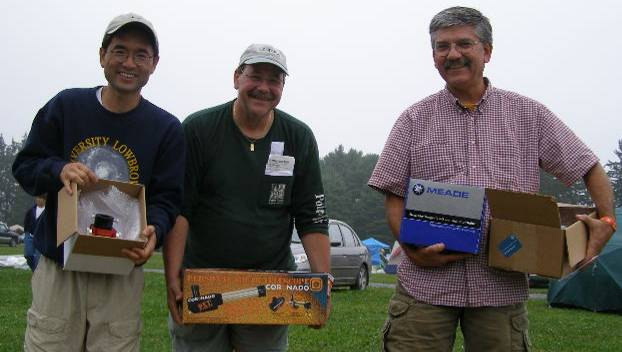

Hello all, it’s been a while since I sat down and wrote an article for the Lowbrow’s Newsletter. Certainly not because of nothing to say, but more that I haven’t had a lot of extra time and the fact that all of you have been coming thru so wonderfully providing articles and images enough to fill the newsletter with only a little prodding from me. Thank you all.
Well, the 2006 Black Forest Star Party is over and although the weather may have kept the observing to a minimum, don’t think for a moment that the Lowbrows came away disappointed. I for one can’t remember when I had as much fun, I haven’t laughed so hard or enjoyed myself more in longer than I care to mention. And I don’t think I am the only one that feels this way, but there are others that are writing articles about the BFSP 2006, and I’ll leave that to them [For such an article, read Captains Log, BFSP 2006—How I Survived The Lowbrow Invasion by Charlie Nielsen, Captain of the good ship Lowbrow (October, 2006).]

I am writing a review about my latest telescope; The Coronado P.S.T. (Personal Solar Telescope), which I won at the 2006 BFSP! That’s right, I won it at the star party and that’s not the only thing won by a Lowbrow. As a matter of fact, the Lowbrows did pretty well in picking up prizes in the “Chinese-raffle” of door prizes. Doug Scobel won the Meade DSI pro CCD camera, and Yasu Inugi walked away with a Moonlite Crayford focuser! Not too shabby!
I have a 5” f/5 refractor on a Meade LXD55 EQ mount with “GoTo” capabilities, and a full aperture “White-Light” solar filter for this set-up. So, “piggy-backing” the PST on this set-up would be ideal. Let me give you the specifications on the Coronado PST, so you know what it is that I’m talking about.
*First caveat: This is all brand new to me and although I have looked through John Causland’s 60mm Coronado, I really don’t know a lot about H-alpha solar astronomy.
Coronado P.S.T. specifications:
| Aperture | 40mm |
| Focal Length | 400mm |
| f/ ratio | f/10 (duh) |
| Bandwidth | <1.0 angstrom (very narrow) centered on 6562.8 angstroms |
| Thermal Stability | 0.005 angstrom/C (not sure what this means, but I think it’s good) |
| Blocking Full Blocking | >10^-5 from EUV to far IR |
| Price | $499.00 retail |
I know what you are thinking, $500 for a 40mm telescope that you can only see one object in... why would anyone get one? Well, I have only had a chance to look through mine for a few hours, but I can honestly say that I understand how Coronado sold over 90,000 of these little beauties. Now, let me state that I did not pay $500 for mine, but having it now and experiencing the views through it... I would be tempted to shell out that kind of cash.
The scope that I won came with a $65.00 case and a 20mm Kellner eyepiece. The case is very nicely made and seems sturdy enough to last for a number of years. The scope is firmly held in place by die-cut non-abrasive foam with room for the optional “MALTA” mount and two additional eyepieces. The optional MALTA mount is a table top altitude / azimuth tripod and mount system designed for the PST. Although, I already have a very stable platform to “piggy-back” my scope to, this $130 option is makes the scope a great grab and go scope. The 20mm Kellner eyepiece that came with the scope is of high quality and provides flat field views at 20x. The sun appears as a rather small magenta colored disk in this eyepiece, only with careful focusing and close scrutiny are the prominences visible. I have found that my 6mm, 9mm & 15mm Expanse eyepieces give me the best images, so far. Coronado offers a line of eyepieces that are specifically designed for their scopes and are said provide high contrasting images, and the word on the Yahoo Forum is that although nice, well manufactured eyepieces, most people are not spending money on these eyepiece if they already have other eyepieces that come to focus.
*Second caveat: Short focal length Naglers have a problem coming to focus in the PST. I’ll have more to say about the focusing later.
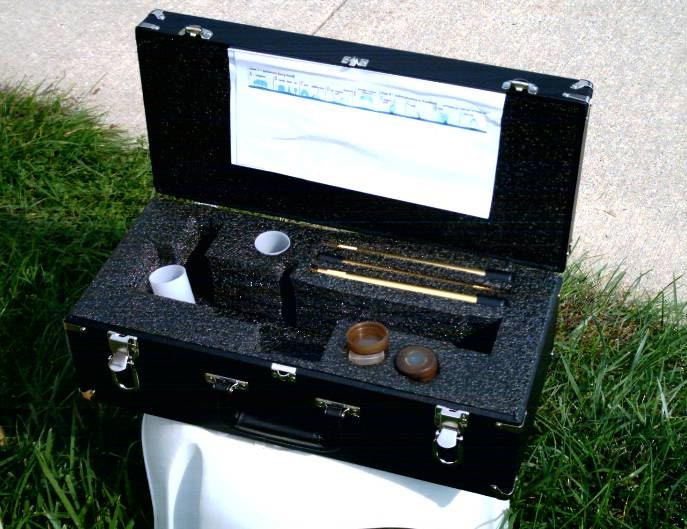
The PST came packaged in the case and very securely at that, in fact I had some difficulty in removing the scope the first time. So, I removed a couple of pieces of the die-cut foam to make it a little easier to get the scope in and out of its case for future use. After extricating the scope from the foam and its case and giving it the “once-over” for scratches, loose or missing screws or parts, I wanted to read the instruction manual. I looked in the case, in the box, and under the foam. I couldn’t find the instruction booklet anywhere; I had the warranty paperwork and a little one page tri-fold full-color leaflet... could this be the manual? Yep, this is the instruction manual and of the six columns that could have been used for instructions, only two were used and one third of one of those columns was the Scope’s Specifications. Now, don’t take this the wrong way, but I would have thought there would be a little more to the instructions. As I read through the instructions and examined and worked each of the components discussed, I was impressed at the simplicity and conciseness of the instructions. They were adequate and informative. Okay, I guess Coronado figures that if you have $500.00 plus, to spend on a 40mm scope that can only be used to see one object, you must already know what you’re doing. As such the instructions are scope specific and do not go into a lot of basic stuff that you know already, instead they explain the nuances of H-alpha scopes and how to “tune” them to achieve the best contrast using the adjustable tuning mechanism. This is a rotate-able knurled knob that makes fine adjustments to the internal “Etalon” filter most likely similar to a pair of polarizing filters. The one page tri-fold instruction manual also lists and defines the type of features visible with a H-alpha scope, of which they list six different features;
Now, lets get to the scope’s performance, “first-light” had to wait for a week (boy, doesn’t that sound typical with a new scope) as my 5” f/5 refractor was on loan to John Causland and it was the next Saturday before I could get it back. My idea was to “piggy-back” the PST on the 5” using the 1/4 20 tapped hole in the base of the PST and the 1/4 20 screw for the camera attachment on the top of my tube rings. Then put the “white-light” filter on the 5” and align the PST up with that and be able to view and show the Sun in two different formats; “white-light” and H-alpha. With a little tweaking and a couple of spacers I was able to get the two scopes aligned.
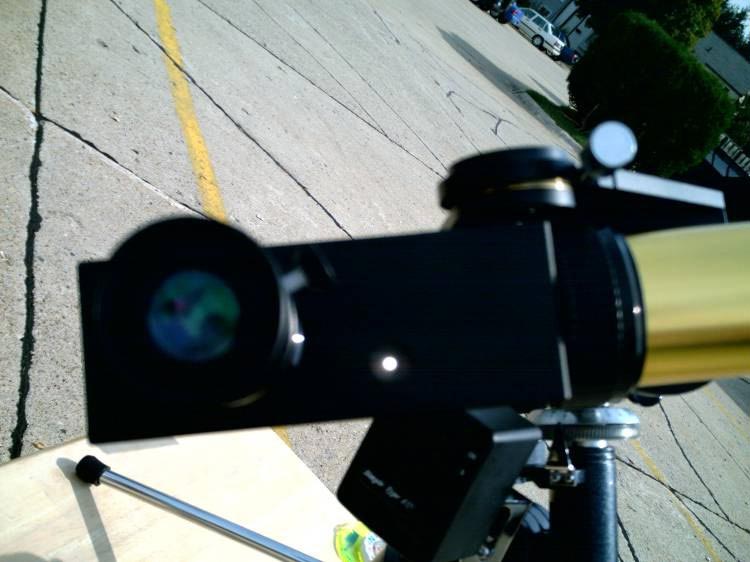
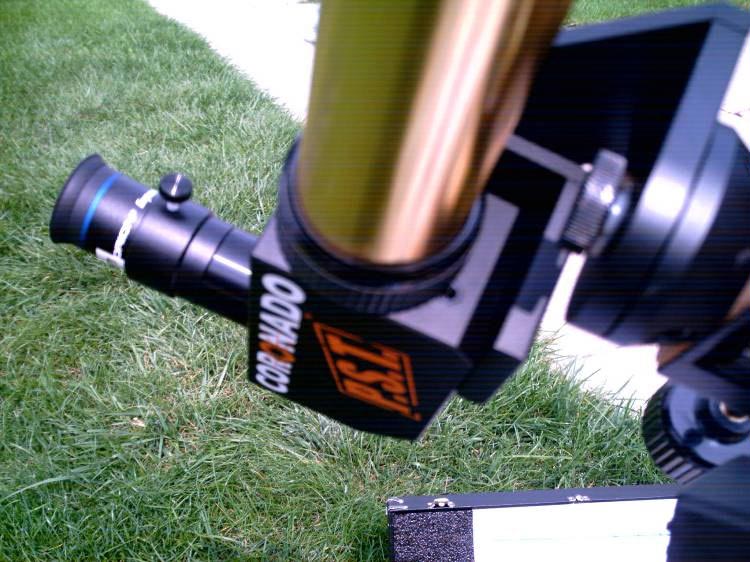
The PST has a very cool little Sun finder device built right into the base / focus housing, which they call the “Sol Ranger.” The “Sol Ranger” consists of a small pin hole in the front face of the base and a small semi-opaque window on the top of the base near the eyepiece holder and when properly aligned on the Sun an internal mirror projects a little circular spot of light on the center of this window, even John Causland thought it was very cool!
For my first look at the Sun in the PST, I used the supplied 20mm Kellner eyepiece, and although the image was crisp with good contrast, the low power 20x image was just too small to show any real detail, my 15mm Orion Expanse seems to work best as a wide field starter eyepiece with good detail, but if you want to get up close and personal break out the 9mm or 6mm Orion Expanse eyepiece which effectively double the power and size of the magenta colored disk and now the finer detail that one would expect becomes visible. I could see prominences, filaments, and an active region surrounding a fairly large sunspot with a number of plages around it. The 40mm aperture means that 80x is about the upper limit of practical usable power, my 15mm, 9mm and 6mm Expanse eyepieces seem to work the best and both come to focus. I mentioned this issue before about certain eyepieces not coming to focus; the PST has a fixed eyepiece holder and an internal diagonal to direct the light path up through the eyepiece.
Focus is achieved by rotating a knob at the bottom rear of the base / focuser housing which moves a “Pentaprism” forward and back inside this housing, in much the same way as a SCT moves the primary mirror back and forth to achieve focus. Due to the limited travel of this system certain types of eyepieces may not come to focus, so keep your Naglers in their containers. High quality Kellners, Plossls and Expanse eyepieces all come to focus with excellent views. The manual warns, “... that it can take time to ‘train’ one’s eye for H-alpha viewing,” and it does take a little practice and tweaking to squeeze out some of the finer details, but this is no different than any other observing, the more time you put into it the better you become.
| The Good | The Bad |
|---|---|
| Incredible views | Size (40mm is just not enough aperture) |
| Size and portability | Instruction manual |
| Craftsmanship and quality | Limited focuser travel |
| Packaging and mechanics | Price of $700.00 including case & MALTA |
| Winning it | (about a $700 Prize) |
Our star is incredibly dynamic and always changing, until I spent some time observing it with this scope, I had no idea how dynamic. Observable changes can be seen happening on a time scale measured in seconds and minutes. John Causland says that the novelty will wear off, and it maybe true that the novelty of a new scope that affords views of an old target in a new way may wear off. However, I don’t think that witnessing the dynamic nature of the Sun unfolding before your very eyes will ever be anything but awe inspiring and fascinating. If you can afford one and want to add solar astronomy to your astronomical experience, get a Coronado PST it is truly a WINNER in my book.
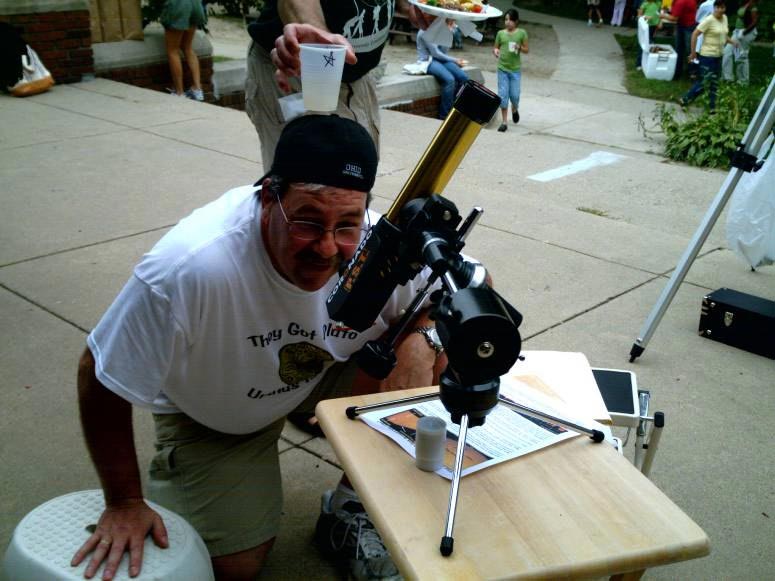
One foot note the time that I first wrote this article, I purchased a “Mini-EQ mount and Astro-Track drive from Orion. This is a light weight table-top equatorial mount with a single axis electronic clock drive that gives me the ability to have a portable, tracking platform with a grab and go scope. Kind of the best of all worlds.
All of the features in the Images below can be seen in the Coronado P.S.T.
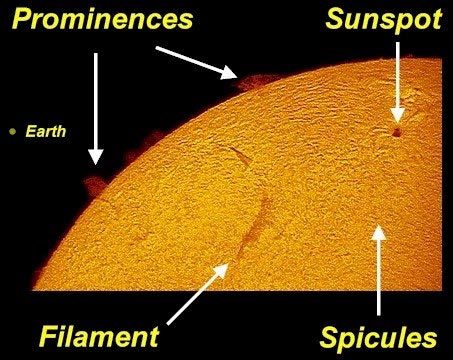
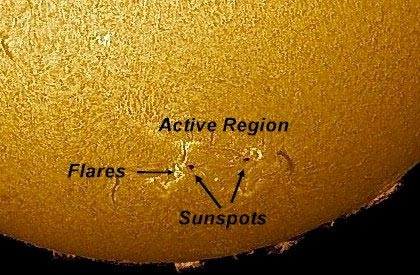
All photos on this page courtesy Mark Deprest.